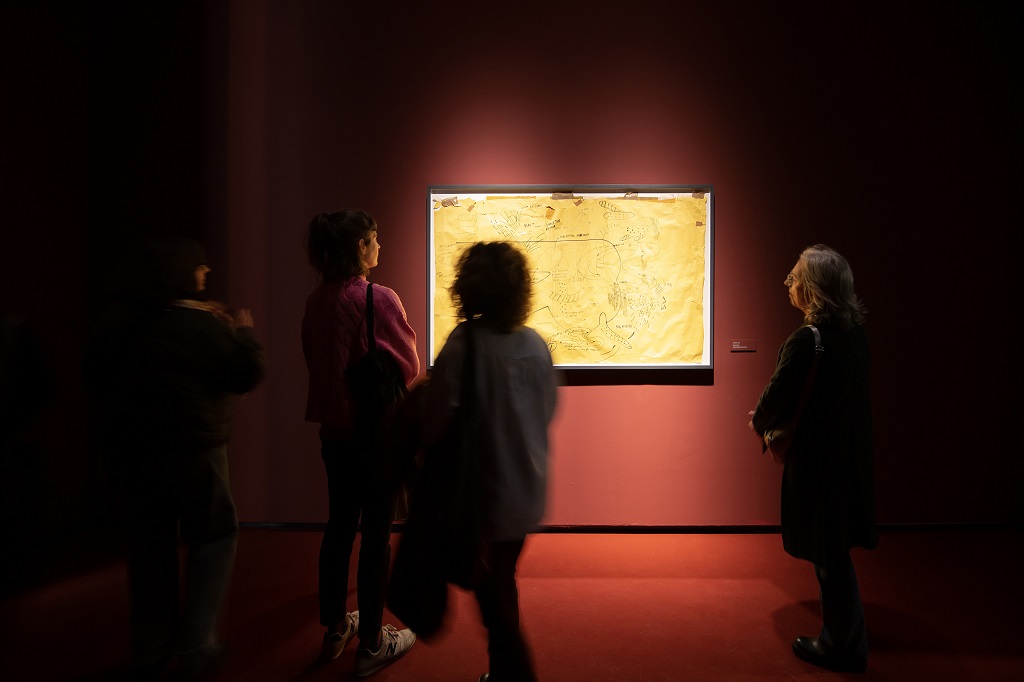The Conference on the Study of The Image is an event dedicated to collective reflection on the theory, practice, semantic openings and contemporary demarcations of visual cultures. It is structured to include a debate forum, seminar and workshops, as well as a public call for research projects (details below).
This conference offers an encounter between artistic, theoretical, activist and epidemiological perspectives on mental health, in an attempt to think about these intersections through certain collaborative artistic practices and the public’s participation.
Even before the Covid-19 pandemic unleashed a wave of depression and anxiety-related disorders, the question of its impact on particular, very specific communities, as well as critiques of certain medical positions related to their diagnosis and treatment, were increasingly on the table, overflowing traditional legitimising spaces.
Mental health and its connection to neurodivergence are part of an often tense dialogue with treatment methods and curative principles, as well as with denial strategies used against collective causes. Particularly critical areas such as grassroots activist movements and artistic practice claim embodied positions and denounce the violence and stigmatisation of much psychiatric practice. At the same time, ‘over-diagnosis’ is prone to critique, among other things, because it excludes the most socially marginalised groups, making them invisible.
Artistic and activist practices propose definitions and approaches to mental health that focus on more intimate, affective aspects of mental health, as well as the vindication of visions read as neurodivergent and the importance of networks for overcoming collective discomfort. These spaces and feelings built around the idea of community self-management of mental health find in creation a tool for healing, but also for protest.
We are looking for papers that reflect on this framework from the artistic and cultural sphere, based on practical work and/or theoretical research (either in progress or complete), with which to build a collective roadmap around the relationship between art and mental health.
Some suggested topics and themes include the following:
-
Artistic narratives and genealogies of madness and mental health.
-
Intersectional perspectives: feminism, anti-ableism, anti-racism, etc.
-
Alliances from art and activism. Strategies of collectivisation of discomfort, stigma and pathologisation of neurodivergence.
-
Artistic practices and trauma.
-
Ethics in artistic work and the participation of audiences and communities around mental health.
-
Anti-psychiatry histories and practices.
-
Pathologisation and de-pathologisation of dissidence.
-
Political and affective approaches to illness and pain.
-
Repressive spaces and mental health: prisons, IDCs, psychiatric hospitals…
Submissions should include:
-
The application form (downloadable HERE), including a summary of the message (250 words)
-
Brief project dossier (pdf, doc, docx) with a maximum size of 10 MB
All documentation should be sent to the following e-mail address: ca2m@madrid.org. If you choose to include attachments, please follow the instructions outlined on the application form. Communication will be in Spanish.
NB: Those selected will be specifically notified of the time and date they will be participating; regardless, we recommend that you have the availability to attend the three days of the conference, namely 16th, 17th and 18th of November. Each selected person will receive 300 euros following the end of the conference and submission of an invoice, to which the relevant deductions must be applied. Selected participants will be responsible for their own travel and accommodation arrangements.
This conference is being organised by Inés Plasencia, Patricia Mayayo and Noemí de Haro within the framework of the project ‘The audiences of contemporary art and visual culture in Spain: new forms of collective artistic experience since the 1960s’ (PID2019-105800GB-I00, Agencia Estatal de Investigación).
With the collaboration of:

Entrance
The Conference on the Study of The Image is an event dedicated to collective reflection on the theory, practice, semantic openings and contemporary demarcations of visual cultures. It is structured to include a debate forum, seminar and workshops, as well as a public call for research projects (details below).
CALL FOR PAPERS: 2023 CONFERENCE ON THE STUDY OF THE IMAGE.










